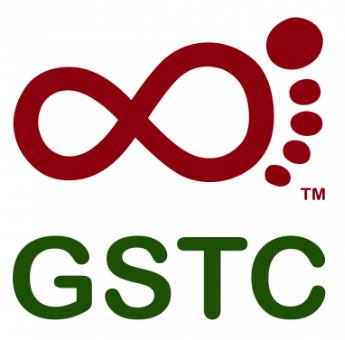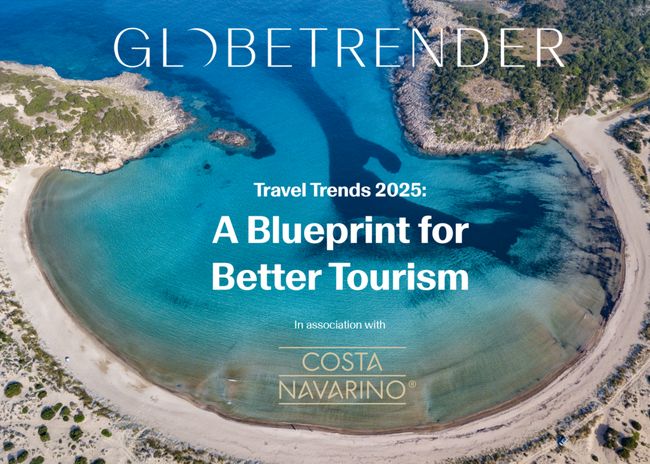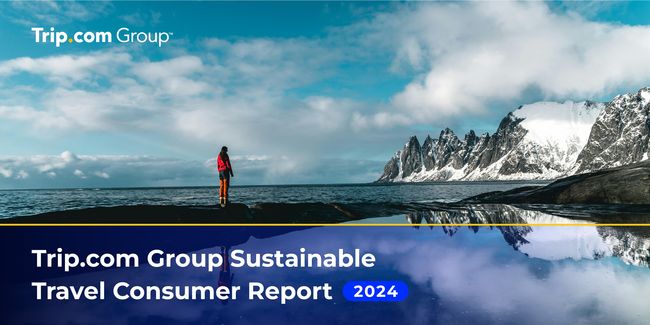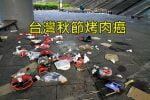 韓國生態旅遊標章
韓國生態旅遊標章
韓國文化與觀光部(Korean Ministry of Culture and Tourism)轄下「韓國觀光公社」(Korea Tourism Organization, KTO)制定的「韓國生態旅遊標準」(Korean Ecotourism Standard)於2017年底獲全球永續旅遊委員會(Global Sustainable Tourism Council, GSTC)認可通過(GSTC-Recognized),將該標準納入全球永續旅遊認證體系,使用「韓國生態旅遊標準」的業者可以同時呈現全球永續旅遊標章。也就是說,人家韓國的生態旅遊標準已經是國際級的,而臺灣的生態旅遊認證標準還不知道在哪裡?
The Global Sustainable Tourism Council (GSTC) is pleased to announce that the Korean Ecotourism Standard for Destinations and the Korean Ecotourism Standard for Accommodations and Tours have achieved ‘GSTC-Recognized’ status.
全球永續旅遊委員會認證準則包含四個永續面向:經營管理、社會/社區、文化及環境等議題。
GSTC Recognition of a standard means that the standard, Korea Ecotourism Standard, in this case, includes the four pillars of sustainability inherent in the GSTC Criteria: management, social/community, cultural, and environmental issues
 全球永續旅遊標章(GSTC Criteria)
全球永續旅遊標章(GSTC Criteria)
感謝臺灣生態旅遊協會理事,也是亞洲生態旅遊聯盟(Asian Ecotourism Network, AEN)理事吳清墩先生,透過他的關係向韓國理事索得「韓國生態旅遊標準」全文(網路上查不到),讓我翻譯介紹給台灣關心與推動生態旅遊的各界先進與朋友,更感謝台灣杜邦公司企業傳播部王韻儀經理在百忙中撥冗為我校稿審譯,讓譯文更正確與順暢。
韓國生態旅遊標準分為「旅遊地」(Destinations)、「旅宿」(Accommodations)及「遊程」(Tours)三類,共通的認證準則大項有:
A. 友善生態的發展 Eco-friendly Development
B. 負責任的經營管理方式 Responsible Management
C. 環境保護 Environmental Conservation
D. 提供名副其實的生態旅遊體驗 Genuine Ecotourism Experiences Provision
E. 引導遊客負責任的行為 Responsible Visitor Behaviors Inducement
F. 在地參與及利益分享 Local Participation and Benefits Sharing
以下是「韓國生態旅遊標準」全文,請參閱:
韓國生態旅遊標準
KOREAN ECOTOURISM STANDARDS
(ver. 11/2017)
賴鵬智翻譯 王韻儀審譯
A. 友善生態的發展 Eco–friendly Development
B. 負責任的經營管理方式 Responsible Management
|
準則 Criteria |
遊程 Tour |
旅宿 Accommodation |
旅遊地 Destinations |
|
|
1. 合法經營管理 Compliance with laws 管理單位(旅遊地)遵守國際與國家相關生態旅遊發展與經營管理的法令,包括健康、安全、勞工、文化與環境等面向。 The organization(destination) abides by national and international law related to ecotourism development and management. It includes health, safety, labor, cultural, and environmental aspects. |
1. 管理單位(旅遊地)遵守相關法規並核准可經營旅遊的事業 The organization(destination) is in compliance with the regulations and permits for tourism business operations. |
V |
V |
V |
|
2. 旅遊業務在最近二年沒有違法情事 There has been no violation of administrative laws on tourism business within the last two years. |
V |
V |
V |
|
|
3. 管理單位(旅遊地)遵守相關生態保育及使用生態旅遊資源的法令規章 The organization(destination) abides by the legislation and regulations on the conservation and use of ecotourism resources. |
V |
V |
V |
|
|
4. 管理單位(旅遊地)設有規定並確實執行防止對任何人(尤其是兒童、青少年、婦女、少數民族)在商業、性及任何形式的剝削與騷擾。 The organization(destination) has laws and established practices to prevent commercial, sexual, or any other form of exploitation and harassment of anyone, particularly of children, adolescents, women, and minorities. |
V |
V |
V |
|
|
2. 保險 Insurance 管理單位(旅遊地)有投保相關保險以保障景點、設施及遊客的權益。 The organization(destination) has an insurance contract to protect tourist destinations, facilities, and visitors. |
1. 有投保相關保險以保障景點、設施及遊客的權益。 There is an insurance contract to protect tourist destinations, facilities, and visitors. |
V |
V |
V |
|
3. 永續發展的經營管理策略 Sustainable management strategies 管理單位(旅遊地)建置與落實多年期(旅遊地)經營管理策略,顧及環境、經濟、社會、文化、品質、健康、安全、美學等議題。這些策略須有公共參與且有足夠的經費支持。計畫內容是可以公開取得的。 The organization(destination) has established and is implementing a multi-year (destination) management strategy. It considers environmental, economic, social, cultural, quality, health, safety, and aesthetic issues. The strategy was developed with public participation and is implemented with appropriate fund. The plan is publicly available. |
1. 建置多年期(旅遊地)經營管理策略,顧及環境、經濟、社會、文化、品質、健康、安全、美學等議題。 A multi-year (destination) management strategy has been established. It considers environmental, economic, social, cultural, quality, health, safety, and aesthetic issues. |
V |
V |
V |
|
2. 管理單位(旅遊地)確實執行策略,並定期檢視與修正。 The organization(destination) implements the strategy and regularly reviews and modifies its strategy. |
V |
V |
V |
|
|
3. 管理單位(旅遊地)有健全的財務管理架構與預算計畫 The organization(destination) has a sound financial management structure and budget plan. |
V |
V |
V |
|
|
4. 季節性的經營管理 Tourism seasonality management 管理單位(旅遊地)應努力維持整年度及週間與週末均勻的遊客量,以穩定經濟收益及有效運用資源。 The organization(destination) strives to achieve a regular flow of visitors throughout the year and between mid-week and weekends where appropriate, in the interests of the economy and efficient use of resources. |
1. 管理單位(旅遊地)應努力減緩淡旺季的影響,並發展一年四季的旅遊機會。 The organization(destination) strives to mitigate seasonal variability of tourism and identifies year-round tourism opportunities, where appropriate. |
– |
– |
V |
|
2. 管理單位(旅遊地)應顧及在地經濟、社區、文化與環境的需求而有季節性的經營管理策略。 The organization(destination) considers the needs of the local economy, community, cultures and environment in the strategies for tourism seasonality management. |
– |
– |
V |
|
|
5. 經營管理主體 Management body 管理單位(旅遊地)有同心協力、足以勝任為達成永續生態旅遊目標的堅實團隊與人力。該團隊要處理環境、經濟、社會、文化、品質、健康與安全等議題。針對所有員工的職責,有一套可以公平聘僱、訓練、發薪、評核,並定期辦理輔導與訓練(包括進階層次)的人事系統。團隊成員由私人部門及公共部門挑出,並和生態旅遊權益相關者合作。 The organization(destination) has effective team and personnel responsible for a coordinated approach to sustainable ecotourism. The team should be suitable for its work scope. The team deals with environmental, economic, social, cultural, quality, health, and safety issues. There is a system for equal employment, equal training, fair wages, fair evaluation, and periodic guidance and training(including advanced level) regarding staff roles and responsibilities for all. The team is drawn from both the private and public sectors and cooperates with stakeholders in the ecotourism management. |
1. 有同心協力、足以勝任為達成永續生態旅遊目標的堅實團隊與人力,每個職位的任務與責任都具體敘明。 There is effective team and personnel responsible for a coordinated approach to sustainable ecotourism and the roles and responsibilities of positions are specified. |
V |
V |
V |
|
2. 整個旅遊地有完備的制度確保企業與員工有公平受僱、公正敘薪、以及訓練與考核的規定。 There is a system in place for determining that the law relating to equal staff recruitment, fair wages, training, and evaluation is applied by employers/enterprises across the destination. |
V |
V |
V |
|
|
3. 針對所有職員的職責,有關環境、經濟、社會、文化、品質、健康與安全等議題的職位與責任,設有定期的輔導與訓練計畫。 There are periodic guidance and training programs for all staff regarding their roles and responsibilities with respect to environmental, economic, social, cultural, quality, health, and safety issues. |
V |
V |
V |
|
|
4. 員工的權利與福利皆受到勞動基準法的保障 The rights and interests of employees are protected by Labor Standards Act. |
V |
V |
V |
|
|
5. 公私部門共同投入與合作生態旅遊的經營管理 Both the private and public sectors are involved and cooperate in the ecotourism management. |
– |
– |
V |
|
|
6. 監測 Monitoring 有年度監測、公開報告的系統反映旅遊對環境、經濟、社會、文化、旅遊及人權等議題產生直接或間接的衝擊影響。該系統應定期檢視與改善。 There is a system to monitor, publicly report, and respond to environmental, economic, social, cultural, tourism, and human rights issues including both direct and indirect tourism impacts at least annually. The system is reviewed and improved periodically. |
1. 管理單位(旅遊地)定期監測環境因子與旅遊對環境的衝擊影響,並對監測結果作出回應。 The organization(destination) periodically monitors environmental issues and environmental impacts of tourism and responds to the results. |
V |
V |
V |
|
2. 管理單位(旅遊地)定期監測社會文化因子及旅遊對社會文化的衝擊影響,並對監測結果作出回應。 The organization(destination) periodically monitors socio-cultural issues and socio-cultural impacts of tourism and responds to the results. |
V |
V |
V |
|
|
3. 管理單位(旅遊地)定期監測經濟因子及旅遊對經濟的衝擊影響,並對監測結果作出回應。 The organization(destination) periodically monitors economic issues and economic impacts of tourism and responds to the results. |
V |
V |
V |
|
|
4. 主管單位與機構應全方面支持民營企業監測旅遊對環境、經濟、社會、文化、旅遊及人權等各方面直接或間接的衝擊影響。 Public authorities and agencies at various levels support private enterprises to monitor environmental, economic, social, cultural, tourism, and human rights issues including both direct and indirect tourism impacts. |
– |
– |
V |
|
|
7. 有因應氣候變遷的策略 Strategy for climate change 管理單位(旅遊地)備有可以辨識氣候變遷所帶來風險與機會的評估系統。該系統促進該設施在發展、配置、設計與經營管理上採行氣候變遷調適策略。該系統有助於對居民與遊客的氣候變遷環境教育。 The organization(destination) has a system to identify risks and opportunities associated with climate change. This system encourages climate change adaptation strategies for development, siting, design, and management of facilities. The system contributes to public education on climate change for both residents and visitors. |
1. 管理單位(旅遊地)備有可以辨識氣候變遷所帶來風險與機會的評估系統 The organization(destination) has a system to identify risks and opportunities associated with climate change. |
– |
– |
V |
|
2. 該系統有助於對居民與遊客的氣候變遷環境教育 The system contributes to public education on climate change for both residents and visitors. |
– |
– |
V |
|
|
8. 盤點旅遊資產與景點 Inventory of tourism assets and attractions 管理單位(旅遊地)備有旅遊資產及景點,包括自然與文化區位,最新且可供開放取得的盤點與評估報告。 The organization(destination) has an up-to-date and publicly available inventory and assessment of its tourism assets and attractions, including natural and cultural sites. |
1. 管理單位(旅遊地)備有旅遊資產及景點,包括自然與文化區位,最新且可供開放取得的盤點與評估報告。 The organization(destination) has an up-to-date and publicly available inventory and assessment of its tourism assets and attractions, including natural and cultural sites. |
– |
– |
V |
|
9. 設有規劃標準 Planning regulations 訂定並執行整合土地利用、設計、建造與拆除之永續發展及經營管理並對環境、經濟、與社會衝擊進行影響評估的規劃指南、標準與(或)政策。 There are planning guidelines, regulations, and/or policies that require environmental, economic, and social impact assessment and integrate sustainable development and management, including land use, design, construction, and demolition. The guidelines, regulations, and/or policies are enforced. |
1. 管理單位(旅遊地)訂定並實施保護自然與文化的規劃指南、標準與(或)政策。 The organization(destination) has established and implemented planning guidelines, regulations, and/or policies that are designed to protect natural and cultural resources. |
– |
– |
V |
|
2. 規劃指南、標準與(或)政策是經由公開討論與審閱程序所建立的。 The guidelines, regulations, and/or policies were created with local input from the public and a thorough review process, and are publicly communicated. |
– |
– |
V |
|
|
3. 民營企業遵行並採用公共制定的指南、標準與(或)政策。 The private enterprises adapt and apply public guidelines, regulations, and/or policies. |
V |
V |
V |
|
|
10. 資產的取得 Property acquisitions 管理單位(旅遊地)執行資產取得時應注意保護公共與個別居民權益的法令規章。 The organization(destination) enforces laws and regulations regarding property acquisitions to protect communal and individual residents’ rights. |
1. 管理單位(旅遊地)在執行法令規章過程中,確時進行公共商議。 The organization(destination) ensures public consultation in the process of implementing the laws and regulations. |
– |
V |
V |
|
2. 管理單位(旅遊地)在沒有事先獲得同意及給予合理補償前,不能遷移居民。 The organization(destination) does not authorize resettlement without prior informed consent and reasonable compensation. |
– |
V |
V |
|
|
11. 遊客滿意度 Visitor satisfaction 管理單位(旅遊地)設有監測及公開遊客滿意度報告的系統,如有必要則採取提升遊客滿意措施。 The organization(destination) has a system to monitor and publicly report visitor satisfaction, and if necessary, to take action to improve visitor satisfaction. |
1. 備有接待與服務遊客的準則 Visitor hospitality and service delivery guidelines are documented. |
V |
V |
V |
|
2. 備有客訴與回應管理的標準流程 Visitor complaint and feedback management procedures are documented. |
V |
V |
V |
|
|
3. 備有預約、確認及取消的明確政策 Reservation, confirmation, and cancellation policies are documented. |
V |
V |
V |
|
|
4. 管理單位(旅遊地)在常態基礎下監測遊客滿意度,並進行提昇遊客滿意的作為。 The organization(destination) monitors visitor satisfaction on a regular basis and takes action to improve visitor satisfaction. |
V |
V |
V |
|
|
5. 對新的住宿客應提供新的鋪床 New bedding is provided for new visitors. |
– |
V |
– |
|
|
12. 永續標準的應用 Application of sustainability standards 旅遊地有推動產業界支持響應全球永續旅遊委員會永續旅遊準則的系統。旅遊地提供大眾取得永續認證或核可的企業名單。 The destination has a system to promote sustainability standards for enterprises industry-supported or consistent with the GSTC Criteria. The destination makes publicly available a list of sustainability certified or verified enterprises. |
1. 旅遊地推動包含全球永續旅遊委員會認可的永續旅遊認證或環境管理系統 The destination promotes sustainable tourism certification or environmental management system including GSTC-recognized standards. |
– |
– |
V |
|
2. 旅遊地監督與支持旅遊事業參與永續認證 The destination monitors tourism business participation in sustainability certification and support them to participate in the certification. |
– |
– |
V |
|
|
3. 旅遊地提供已獲得永續認證或核可的企業名單 The destination provides a list of sustainably certified or verified enterprises. |
– |
– |
V |
|
|
13. 危機與緊急事故處理 Crisis and emergency management 旅遊地常備危機與緊急事故應變計畫並隨時更新。此計畫定期對員工、居民、遊客及企業訓練及溝通。 The destination has a crisis and emergency response plan that is updated on a regular basis. The plan and regular training are communicated to staff, residents, visitors, and enterprises. |
1. 設立並定期更新危機與緊急事故處理計畫 Crisis and emergency management plan has been established and updated regularly. |
– |
– |
V |
|
2. 備有危機與緊急事故應變程序與方法,並提供給員工、居民、遊客及企業。 Emergency and emergency response procedures and methods are documented and provided to staff, residents, visitors, and enterprises. |
– |
– |
V |
|
|
3. 定期訓練以因應緊急事故的發生 There is a regular training program in order to cope with emergencies. |
– |
– |
V |
|
|
14. 安全與保安 Safety and security 管理單位(旅遊地)有監控、防止、公開報告及回應犯罪、安全及健康傷害的系統。 The organization(destination) has a system to monitor, prevent, publicly report, and respond to crime, safety, and health hazards. |
1. 管理單位(旅遊地)有防止與回應犯罪、安全及健康傷害的系統。 The organization(destination) has a system to prevent and respond to crime, safety, and health hazards. |
V |
V |
V |
|
2. 隨時可取得急救裝備 First aid equipment is always kept available. |
V |
V |
V |
|
|
15. 推廣行銷 Promotion 促銷資料是精確的,且完整揭露旅遊地、組織機構及其產品、服務與永續環境訴求。促銷信息須真誠與尊重的呈現在地社區風貌,對遊客語氣也是尊重的。 Promotional materials are accurate and complete with regard to the destination, organization, and its products, services, and sustainability claims. The promotional messages treat local communities authentically and respectfully and treat visitors respectfully. |
1. 管理單位(旅遊地)定期進行市場調查 The organization(destination) carries out marketing surveys periodically. |
V |
V |
V |
|
2. 管理單位(旅遊地)提供精確的,且完整揭露旅遊地、組織機構及其產品、服務與永續環境訴求的資料,且對其服務不能言過其實。 The organization(destination) provides accurate and complete information with regard to the destination, organization, and its products, services, and sustainability claims, and does not exaggerate or overstate its services. |
V |
V |
V |
|
|
3. 促銷信息須真誠與尊重的呈現在地社區風貌,對遊客語氣也是尊重的。 The promotional messages treat local communities authentically and respectfully and treat visitors respectfully. |
V |
V |
V |
|
|
16. 智慧財產 Intellectual property 管理單位(旅遊地)須有保護社區與個體智慧財產權的系統 The organization(destination) has a system to contribute to the protection and preservation of intellectual property rights of communities and individuals. |
1. 管理單位(旅遊地)須有保護社區與個體智慧財產權的系統 The organization(destination) has a system to contribute to the protection and preservation of intellectual property rights of communities and individuals. |
V |
V |
V |
C. 環境保護 Environmental Conservation
|
準則 Criteria |
遊程 Tour |
旅宿 Accommodation |
旅遊地 Destinations |
|
|
1. 積極的環境管理作為 Active environmental management 管理單位(旅遊地)依照環境、經濟、社會文化及承載量管制等需求進行遊客量及行為的管理。該系統必須定期檢視、評估及改善,並有生態旅遊權益相關者參與。出版正確處理能源、水、固態廢棄物、有害物品等議題的環境管理手冊。 The organization(destination) has managed the total number of visitors and the activities according to environmental, economic, socio-cultural, and managerial carrying capacity. There is a system to regularly review, evaluate, and improve the practices with stakeholders’ involvement. There is also a published Manual for environmental management. The Manual deals with the issues related to energy, water, solid waste, harmful substances, etc. and proper response to the issues. |
1. 設定承載量,並依此管制遊客量及活動。 The carrying capacity is established, and the total number of visitors and the activities are controlled accordingly. |
– |
– |
V |
|
2. 員工必須遵守友善生態規範 There is an eco-friendly code of conduct that employees must be in compliance with. |
V |
V |
V |
|
|
3. 有環境管理手冊 There is an environmental management Manual. |
V |
V |
V |
|
|
4. 管理單位(旅遊地)能指出環境風險並妥善處理 The organization(destination) has identified environmental risks and has a system in place to address them. |
– |
– |
V |
|
|
5. 定期評核環境管理的結果並據此擬定改善策略 The results of the environmental management practices are evaluated regularly and the strategies for improvement are implemented based on the results. |
V |
V |
V |
|
|
6. 儘量減少使用殺蟲劑、塗料、游泳池消毒劑、清潔用品等有害物品,儘可能使用無毒產品。 The use of harmful substances, including pesticides, paints, swimming pool disinfectants, and cleaning materials, is minimized and is substituted by innocuous products, when available. |
– |
V |
– |
|
|
7. 正確儲存、使用、搬運及處理化學物品。 The storage, use, handling, and disposal of chemicals are properly managed. |
– |
V |
– |
|
|
8. 實務上要減少因雨水逕流或使用破壞臭氧層的化合物所帶來的污染,也要避免製造空氣、水及土壤的污染物。 There are practices to reduce pollution from runoff, ozone-depleting compounds, and air, water, and soil contaminants. |
– |
V |
– |
|
|
2. 能源管理 Energy management 管理單位(旅遊地)有評估、監控、公開報告及減用石化燃料後的節能政策與系統,這包括降低光害的方針與規定,也鼓勵在這區域的生態旅遊權益相關者遵守有關能源及光害的方針與規定。 The organization(destination) has a policy and system to measure, monitor, publicly report, and reduce energy consumption while reducing reliance on fossil fuels. It includes guidelines and regulations to minimize light pollution. The stakeholders in the area are encouraged to follow the guidelines and regulations related to energy and light pollution. |
1. 已使用綠色能源與再生能源 Green energy and renewable energy facilities have been introduced and are utilized. |
– |
V |
V |
|
2. 設施在白天使用自然光 Facilities were designed to use natural light in daytime. |
– |
V |
V |
|
|
3. 在道路、通道、與外部空間使用感應式燈光。 Lighting is activated by motion sensors in roads, corridors, and external spaces. |
– |
V |
V |
|
|
4. 儘量降低夜間燈光對自然生態系的衝擊 Lighting in nighttime is managed to minimize negative impacts on the natural ecosystem. |
– |
V |
V |
|
|
5. 電子產品應符合國家第一級能源效率標準 Installed electronics meet the 1st energy efficiency grade of the national rating system. |
– |
V |
V |
|
|
6. 裝設符合能源效率的燈光 Energy-efficient lighting equipment is installed. |
– |
V |
V |
|
|
7. 使用窗簾、百葉窗、隔熱窗等降低熱傳導與耗能。 Reduction of energy use is in practice and heat transfer through windows is minimized through the use of curtains, blinds, insulating window etc. |
– |
V |
– |
|
|
8. 每個房間可以獨立控制冷暖空調 Heating and cooling temperatures can be adjusted individually for each room. |
– |
V |
– |
|
|
9. 非必要不在客房裝設電視、冰箱或廚具。 Installation of TVs, refrigerators or cooking facilities in guest rooms is minimized. |
– |
V |
– |
|
|
10. 管理單位(旅遊地)對不同能源有評估、監控、及降低消耗的系統。 The organization(destination) has a system in place to measure, monitor, and reduce energy consumption by types of energy sources. |
– |
V |
V |
|
|
3. 水資源管理 Water management 管理單位(旅遊地)對水資源有評估、監測、公開報告、節水、確保用水安全及適當的廢污水處理的政策與系統。用水企業必須確保沒有損及在地社區的用水權益。管理單位(旅遊地)亦有監測飲用水及娛樂用水的品質,並及時處理水質問題。 The organization(destination) has a policy and system to indicate water sources, measure, monitor, publicly report, and reduce water usage, and to ensure safe and proper wastewater treatment. It should be ensured that the use by enterprises is compatible with the water requirements of the destination communities. The organization(destination) also has a system to monitor drinking and recreational water quality and respond in a timely manner to water quality issues. |
1. 儲留及再使用雨水 Rain water is saved and recycled. |
– |
V |
V |
|
2. 使用自動關水的龍頭 Automatic lock faucets are in use. |
– |
V |
V |
|
|
3. 宣導遊客節約用水 Documented recommendations on water conservation are presented to visitors. |
– |
V |
V |
|
|
4. 使用友善生態的清潔劑 Eco-friendly detergents are being used. |
– |
V |
V |
|
|
5. 浴室優先設置蓮蓬頭而非浴缸 Each room with a bathroom is equipped with a shower booth rather than a bath. |
– |
V |
– |
|
|
6. 勸導續住房客續用原來的毛巾與寢具 Visitors are advised to reuse towels, bedding, etc. |
– |
V |
– |
|
|
7. 對續用毛巾與寢具的續住客給予優惠 Provide incentives for visitors to reuse towels or bedding. |
– |
V |
– |
|
|
8. 房務人員力行再利用政策 The housekeepers put the policy of reuse into practice. |
– |
V |
– |
|
|
9. 管理單位(旅遊地)遵守設置污水處理廠及處理廢污水的法令規章,並確保安全處理廢污水。 The organization(destination) abides by the legislation and regulations on the wastewater disposal facilities and wastewater treatment and ensure safe wastewater treatment. |
– |
V |
V |
|
|
10. 管理單位(旅遊地)確保永續且合法的水源,並有評估、監測及節水的系統。 The organization(destination) has systems in place to ensure a sustainable supply from legal sources, and to measure, monitor, and reduce water usage. |
– |
V |
V |
|
|
11. 確保在景區內或週邊的用水單位或企業不會損及在地社區用水的權益 It should be ensured that the use by organization and other enterprises in and around the destination is compatible with the water requirements of the destination communities. |
– |
V |
V |
|
|
4. 固態廢棄物處理 Solid waste management 管理單位(旅遊地)有評估、監控、減量、再利用及回收固態廢棄物的系統,並鼓勵生態旅遊權益相關者遵行相關準則與規定。處理無法再利用或資源回收的固態廢棄物時須確保安全性及永續性。 The organization(destination) has a system to measure, monitor, reduce, reuse, and recycle solid waste and to encourage the stakeholders to follow related guidelines and regulations. Any residual solid waste that is not reused or recycled is disposed of safely and sustainably. |
1. 不提供拋棄式用品 Disposable products are not provided to visitors. |
V |
V |
V |
|
2. 透過電郵或網站提供電子行銷資料以取代印刷品 Replace printed promotional materials with e-marketing through email or website. |
V |
V |
V |
|
|
3. 監控固態廢棄物總量,並遵行收集與處理垃圾的準則。 The total amount of solid waste is monitored and garbage collection and disposal guidelines are followed. |
V |
V |
V |
|
|
4. 購買整批包裝的必需品及原料以減少包裝廢棄物 Ingredients and needed goods are purchased with bulk packaging to reduce packaging waste. |
– |
V |
V |
|
|
5. 努力減少廚餘 There is a system in effect to minimize food waste. |
– |
V |
V |
|
|
5. 管理噪音污染及空氣品質 Noise pollution and air quality management 管理單位(旅遊地)有儘量減少噪音污染及保持良好空氣品質的準則與規定,並鼓勵生態旅遊權益相關者遵行。 The organization(destination) has guidelines and regulations to minimize noise pollution and keep good air quality and to encourage the stakeholders to follow related guidelines and regulations. |
1. 有減少噪音污染的系統 There is a system to minimize noise pollution. |
V |
V |
V |
|
2. 在景區室內外都實施禁菸政策 |
V |
V |
V |
|
|
6. 綠色實務 Green practices 管理單位(旅遊地)有綠色採購、再利用及資源回收系統 The organization(destination) has a system for green purchase, reuse, and recycling. |
1. 有綠色採購方針 Guidelines for green purchasing practices are in place. |
V |
V |
V |
|
2. 鼓勵員工與遊客力行再利用與資源回收 There is a system to encourage both employees and visitors to participate in the reuse and recycling program. |
V |
V |
V |
|
|
3. 監控拋棄式用品與消耗品的使用量 The use of disposable products and consumable supplies are monitored. |
V |
V |
V |
|
|
4. 有員工與遊客參與再利用與資源回收的系統 There are systems for both employees and visitors to participate in reusing and recycling. |
V |
V |
V |
|
|
5. 優先採購綠色(或回收再製)產品,或重複利用物品。 There is a preferential purchasing system for green/recycled products or reused goods. |
V |
V |
V |
|
|
6. 宣傳品優先使用再生紙或沒有漂白的紙 Recycled or unbleached paper is primarily used for promotional materials. |
V |
V |
V |
|
|
7. 低環境衝擊的交通運輸 Low-impact transportation 管理單位(旅遊地)鼓勵及增加使用低環境衝擊的交通運輸方式,包括公共運輸及主動式運輸(如步行、自行車、溜冰、滑板等) The organization(destination) has a system to encourage and increase the use of low-impact transportation, including public transportation and active transportation. |
1. 鼓勵遊客搭乘大眾交通工具,並提供路線及車資等完整的交通資訊供遊客參考。 There is a system to encourage visitors to use public transportation with information on how to use the system including route information and how to pay fares. |
V |
V |
V |
|
2. 鼓勵員工步行、騎自行車或搭乘大眾交通工具 Employees are encouraged to walk, bike, and use public transportation. |
V |
V |
V |
|
|
3. 購置環保車輛,並力行節能駕駛方式與友善生態車隊的管理。 Green cars are purchased and there is a practice of eco-driving methods and eco-friendly fleet management. |
V |
V |
V |
|
|
4. 如有可能,在區域內儘量要求遊客步行或騎乘自行車。 Where appropriate, walking or riding bicycles within the areas used by visitors is requested. |
V |
V |
V |
|
|
5. 如在區域內需要用到車輛,就用環保車輛。 Green cars are used, if vehicles are needed for moving within the area. |
– |
V |
V |
|
|
6. 依遊客人數多寡提供適當車型的車輛 Appropriate vehicles according to the number of visitors are provided. |
V |
– |
– |
|
|
8. 保護野生動植物 Wildlife protection 管理單位(旅遊地)有確保符合國家與國際相關野生動植物收成(或獵獲)、使用、展示與販賣的法令規章的系統。 The organization(destination) has a system to ensure compliance with national and international laws and standards for the harvest or capture, consumption, display, and sale of wildlife including plants and animals. |
1. 管理單位(旅遊地)確保野生動物或瀕危植物的利用是符合永續利用原則且合法,否則就不收捕、製造、使用、展示或販賣其產製品。 The organization(destination) does not harvest, manufacture, consume, display, or sell products made with wild animals or endangered plants as raw material, except as part of a regulated activity that ensures that their utilization is sustainable and in compliance with the law. |
V |
V |
V |
|
2. 除非是在規範下並符合永續利用原則及合法,否則不展示抓捕來的野生動物或受保護的活體植物標本。 There |
V |
V |
V |
|
|
9. 管理溫室氣體排放 Greenhouse gas emissions management 管理單位(旅遊地)針對營運時會排放溫室氣體的每一項目進行評估、監控、公開報告、最少排放或減輕排放的系統,並鼓勵旅遊地與週邊企業儘少排放或減輕排放,且有碳補償措施。 The organization(destination) has a system to measure, monitor, publicly report, minimize, and mitigate their greenhouse gas emissions from all aspects of their operation and also encourage enterprises in and around the destination to minimize and mitigate their greenhouse gas emission. There are activities to offset remaining greenhouse gas emissions. |
1. 管理單位(旅遊地)有監控、公開報告、減輕溫室氣體排放的系統。 The organization(destination) has a system to monitor, publicly report, and reduce the greenhouse gas emissions. |
V |
V |
V |
|
2. 管理單位(旅遊地)有碳補償措施 The organization(destination) has implemented activities to offset remaining greenhouse gas emissions. |
V |
V |
V |
|
|
3. 管理單位(旅遊地)有鼓勵旅遊地與週邊的企業儘少排放或減輕排放溫室氣體的系統 The organization(destination) has a system to encourage enterprises in and around the destination to minimize and mitigate their greenhouse gas emission. |
– |
– |
V |
|
|
10. 生態保育 Contribution to conservation 管理單位(旅遊地)在旅遊當地及週邊採取各種措施以保護自然與文化資源及場域。有鼓勵與統合包括遊客在內的生態旅遊相關權益人貢獻生態保育的系統。 The organization(destination) participates in various conservation activities in and around the destination to protect natural and cultural assets and sites. There is a system to encourage and collect contributions for conservation from stakeholders including visitors. |
1. 捐出收益的一部分貢獻在保護自然與文化資源及其場域 A portion of profits is donated for the conservation of natural and cultural assets and sites. |
V |
V |
V |
|
2. 管理單位(旅遊地)進行或支持生態研究 The organization(destination) does |
V |
V |
V |
|
|
3. 管理單位(旅遊地)在旅遊地及週邊直接參與生態保育行動 The organization(destination) directly participates in the conservation activities in and around the destination. |
V |
V |
V |
|
|
4. 管理單位(旅遊地)與保育組織或學校建立夥伴關係,並參與他們的保育行動。 The organization(destination) has a partnership with conservation-related organizations, schools, etc. and actively participates with them for conservation. |
V |
V |
V |
|
D. 提供名副其實的生態旅遊體驗 Genuine Ecotourism Experiences Provision
|
準則 Criteria |
遊程 Tour |
旅宿 Accommodation |
旅遊地 Destinations |
|
|
1. 自然與文化體驗 Nature and cultural experiences 管理單位(旅遊地)提供各式活動讓遊客得以享受、體驗及理解旅遊地的自然與文化。 The organization(destination) provides |
1. 遊客活動聚焦在對於保護自然與文化價值的理解及貢獻 Visitor activities are focused on understanding and contributing to conserving the value of nature and culture in a region. |
V |
V |
V |
|
2. 遊程內容可以讓遊客以五感體驗自然 The tour program includes an opportunity for visitors to experience the nature using five senses. |
V |
– |
V |
|
|
3. 遊程內容可以讓遊客體驗在地文化 The tour program provides an opportunity to experience the culture of local people. |
V |
– |
V |
|
|
4. 遊程內容應有超過一半的活動時間待在自然區域 The tour program spends more than 50% of activity hours in the natural area. |
V |
– |
– |
|
|
5. 設施的設計、裝潢及營運應該融入在地藝術、建築風格或文化遺產。 The elements of local art, architecture, or cultural heritage are incorporated in the design, decoration, and operation of facilities. |
– |
V |
– |
|
|
2. 解說服務 Interpretation Services 管理單位(旅遊地)提供在地精確的自然與文化解說資訊,這些資訊的收集來自社區調查,且符合在地文化,並以遊客可以理解的語言呈現。 The organization(destination) has provided accurate interpretive information at natural and cultural sites. The information is culturally appropriate, developed with community collaboration, and communicated in languages pertinent to visitors. |
1. 有全職的專業導遊/解說員 There is a full time professional guide/interpreter. |
– |
– |
V |
|
2. 專業導遊/解說員全程陪伴遊客 A professional guide or interpreter must accompany the visitors during their tour. |
V |
– |
– |
|
|
3. 管理單位(旅遊地)在遊客出發前提供遊客須知或在活動開始前宣導注意事項 The organization(destination) provides information about what visitors need to know prior to their travel or operates an educational program before starting the tour. |
V |
V |
V |
|
|
4. 管理單位(旅遊地)長期提供遊客(或潛在顧客)有關旅遊地自然與文化的資訊 The organization(destination) provides visitors (including potential customers) with nature/culture-related information on the destination consistently. |
V |
V |
V |
|
|
5. 導遊/解說員應定期接受專業訓練 The guides and interpreters regularly participate in a professional training program. |
V |
– |
V |
|
|
6. 管理單位(旅遊地)對需要的遊客提供在地導遊/解說員 The organization(destination) introduces a local guide, if any visitor requests. |
– |
V |
V |
|
|
7. 有自導式解說服務或設備 There are self-guided interpretative services and/or equipment. |
– |
V |
V |
|
|
8. 提供精確且符合在地文化的資訊,並以遊客可以理解的語言呈現。 The information is accurate and culturally appropriate, and is communicated in languages pertinent to visitors. |
V |
V |
V |
|
|
3. 規劃並執行解說 Interpretation planning and execution 管理單位(旅遊地)規劃解說服務與提供簡介,並定期審視與改善。 The organization(destination) has a plan and Manual for interpretation service and reviews and improves the plan and Manual regularly. |
1. 管理單位(旅遊地)建置解說計畫 The organization(destination) has established an interpretation plan. |
V |
– |
V |
|
2. 監督解說項目確實執行 Monitoring for the interpretation program is carried out. |
V |
– |
V |
|
|
3. 備有實用的解說服務簡介 A |
V |
– |
V |
|
E. 引導遊客負責任的行為 Responsible Visitor Behaviors Inducement
|
準則 Criteria |
遊程 Tour |
旅宿 Accommodation |
旅遊地 Destinations |
|
|
1. 遊客管理 Visitor management 顧及遊客與野生動物不當互動帶來的累積衝擊效應,管理單位(旅遊地)應有遊客管理系統以保護自然與文化資產及場域。須在嚴格監管下才能販售、交易、展示或贈送包括骨董在內的旅遊資產。相關管理規範必須由受到影響的社區參與討論及同意。 The organization(destination) has a visitor management system to protect natural and cultural assets and sites, taking into account the cumulative impacts of interactions with wildlife. The sale, trade, display, or gifting of tourism assets including historical and archaeological |
1. 一位導遊/解說員最多只帶20位遊客 The number of visitors who are led by one guide does not exceed the maximum of 20. |
V |
– |
V |
|
2. 管理單位(旅遊地)提供遊客可以遵循的生態旅遊規範 The organization(destination) provides visitors with a code of conduct for ecotourism. |
V |
V |
V |
|
|
3. 導遊/解說員在行前必須先檢視生態旅遊地現況,並引導遊客儘量減輕旅遊對環境的負面衝擊。 The guides check current situations and local conditions of ecotourism sites prior to a |
V |
– |
V |
|
|
4. 管理單位(旅遊地)應提供行前須知,指導遊客在特定地區或活動適宜的穿著及裝備。 The organization(destination) provides advance guidance to visitors to take the appropriate attire and equipment for specific places and activities. |
V |
– |
V |
|
|
5. 遊程安排應注意避免在野生動物繁殖季節時產生負面衝擊 Tours are scheduled to avoid negative impacts on wildlife |
V |
– |
V |
|
|
6. 遊程進行中,應與野生動物重要棲地保持適當距離。 Tours are carried out by maintaining an appropriate distance from the important wildlife habitats. |
V |
– |
V |
|
|
7. 遊程中若可能影響到野生動植物,必須遵守專家意見,或是經過主管機關的核可。 Tours are carried out in accordance with the opinions of experts or with the approval of the relevant authorities, when they may have impacts on the wild plants and animals. |
V |
– |
V |
|
|
8. 在敏感情況或地區,嚴禁閃光攝影。 Flash photography is forbidden in sensitive situations or sensitive areas. |
V |
– |
V |
|
|
9. 遊客不得在未經法令許可下取得在地資產 Visitors are instructed not to take local assets without permission according to local and national laws. |
V |
V |
V |
|
|
10. 導遊/解說員要讓遊客了解在地社區及區域的獨特文化,以免遊客的不當行為衝擊到社區及其生活方式。 The guide explains to the |
V |
V |
V |
|
|
11. 管理單位(旅遊地)應了解在地居民對遊程與操作方式的建議與抱怨,予以回應並改善缺失。 |
V |
V |
V |
|
|
12. 引導遊客在設定的路徑上活動,並讓其了解離開設定路徑會帶來環境傷害。 Visitors are guided to move along only designated pathways and are informed of the harmful effects of leaving the designated pathways. |
V |
– |
– |
|
F. 在地參與及利益分享 Local Participation and
|
準則 Criteria |
遊程 Tour |
旅宿 Accommodation |
旅遊地 Destinations |
|
|
1. 對社區福祉有貢獻 Contribution for local welfare 管理單位(旅遊地)對社區福祉有貢獻 The organization(destination) contributes for local welfare. |
1. 管理單位(旅遊地)支持在地社區的財務,以照顧當地福祉。 The organization(destination) financially supports the local community in order to contribute for its welfare. |
V |
V |
V |
|
2. 管理單位(旅遊地)對當地學校與居民提供優惠 The organization(destination) provides discounted admission and usage prices to local schools and residents. |
V |
V |
V |
|
|
3. 管理單位的行事作為不會傷及鄰近社區的生活基本服務,如食物、水、能源、健康醫療或環境衛生等。 The activities of the organization do not jeopardize the provision of basic services, such as food, water, energy, healthcare or sanitation, to neighboring communities. |
V |
V |
– |
|
|
4. 旅遊行為不會對在地的生計需求產生不利影響,如使用陸生或水生資源、通行權、運輸及住宅等。 Tourism activity does not adversely affect local access to livelihoods, including land and aquatic resources use, rights-of-way, transport |
V |
V |
– |
|
|
5. 管理單位不應阻礙居民進入重要的歷史、考古、文化與精神上的資產或場域。 The organization does not impede access by local residents to local historical, archeological, culturally, and spiritually important properties and sites. |
V |
V |
– |
|
|
6. 有可行且鼓勵遊客、企業與大眾對社區及永續倡議有所貢獻的系統。 There is a system to enable and encourage visitors, enterprises, and the public to contribute to community and sustainability initiatives. |
– |
– |
V |
|
|
2. 支持在地社區的能力建構 Support for capacity building of the local community 管理單位(旅遊地)提供多樣化的訓練課程以提昇在地社區對發展生態旅遊的意識與能力 The organization(destination) supports local community to enhance its awareness and capability of ecotourism development through providing various training programs. |
1. 管理單位(旅遊地)提供訓練課程以提昇當地居民與企業對發展生態旅遊的意識與能力 |
V |
V |
V |
|
2. 管理單位(旅遊地)提供假日訓練、年輕人實習機會,以及對在地居民的顧問服務。 The organization(destination) provides vocational training, youth internships opportunity, and mentoring services for local residents |
V |
V |
V |
|
|
3. 與在地社區合作 Cooperation with local community 管理單位(旅遊地)有鼓勵社區參與旅遊地規劃及決策,並持續定期檢視、記錄與回應其意見的系統。旅遊地對在地社區進入自然與文化區域須進行監測與保護資源措施,必要時應重建或修復。 |
1. 管理單位(旅遊地)在整個規劃、發展及營運期間收集並回應在地社區的意見。 The organization(destination) collects and reflects opinions of the local community throughout the entire process of planning, development, and operation. |
V |
V |
V |
|
2. 旅遊地對在地社區進入自然與文化區域須進行監測與保護資源措施,必要時應重建或修復。 The destination monitors and protects local community access to natural and cultural sites, and when necessary rehabilitates or restores it. |
– |
– |
V |
|
|
4. 支持在地企業 Supports for the local enterprises 管理單位(旅遊地)有支持在地企業基於歷史、文化與自然特性所發展與販售永續在地產品的系統,並以公平交易的原則與商品來行銷。 The organization(destination) has a system that supports local enterprises to develop and sell sustainable local products based on the area’s history, culture, and natural attributes. It promotes fair trade principles and products. |
1. 管理單位(旅遊地)有優先僱用在地居民的政策 The organization(destination) has a preferential hiring policy of local residents. |
V |
V |
V |
|
2. 管理單位(旅遊地)有優先以公平交易方式銷售在地包括食材等產品的政策 The organization(destination) has a preferential purchasing policy of local and fair trade products including food material. |
– |
V |
V |
|
|
3. 管理單位(旅遊地)會幫忙行銷或推薦週邊社區的餐廳、景點、旅宿與紀念品等。 The organization(destination) promotes or recommends nearby communities’ restaurants, tourist attractions, accommodations, souvenirs, etc. |
– |
V |
V |
|
|
4. 管理單位(旅遊地)會提供遊客購買到在地產品的機會 The organization(destination) provides visitors with an opportunity to purchase local products. |
V |
V |
V |
|
|
5. 生態旅遊體驗之一就是遊客到在地餐廳品嚐在地美食 Visits to local restaurants and tasting of local food are included in tours as one of the ecotourism experiences. |
V |
– |
– |
|
|
6. 遊程應安排到在地居民經營的服務項目 A program run by local people are included in |
V |
– |
– |
|
歡迎來信[email protected]索取韓國生態旅遊標準中英對照word檔
如有翻譯錯誤之處,敬請不吝指正!
延伸閱讀:
全球永續旅遊準則-旅遊地篇中英對照及與2030永續新禧年17項永續發展目標之對應
世界旅遊及旅行理事會2017國際永續旅遊發展年宣言(中英對照)
世界自然保育聯盟世界保育大會決議強化生態旅遊標準(中英對照)
聯合國65屆大會決議促進生態旅遊以消除貧窮和保護環境(中英對照)
本部落格「生態旅遊或觀光遊憩」、「環保旅館」、「環境保護」、「澳洲系列」等專欄各文。







